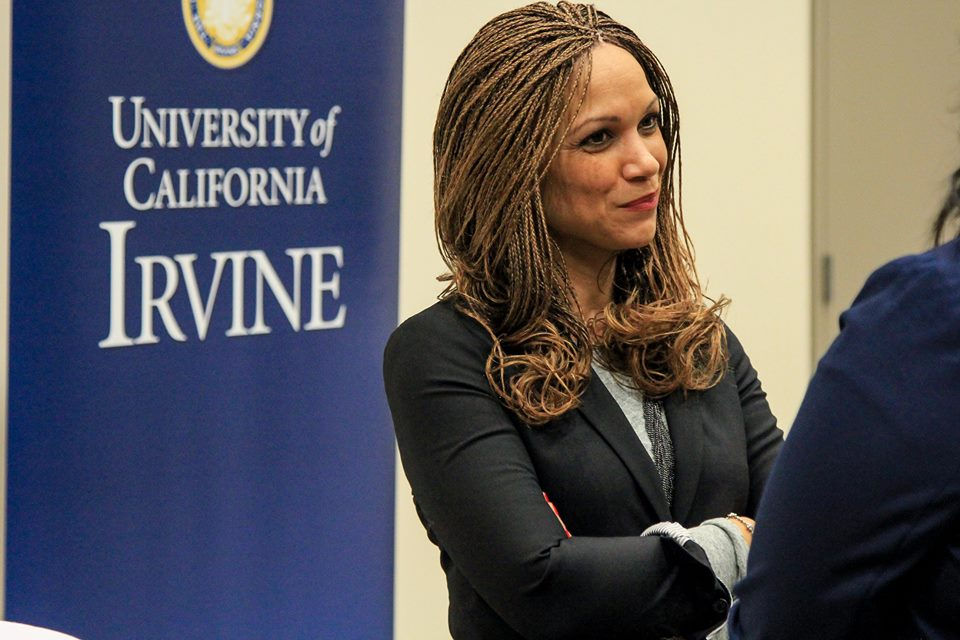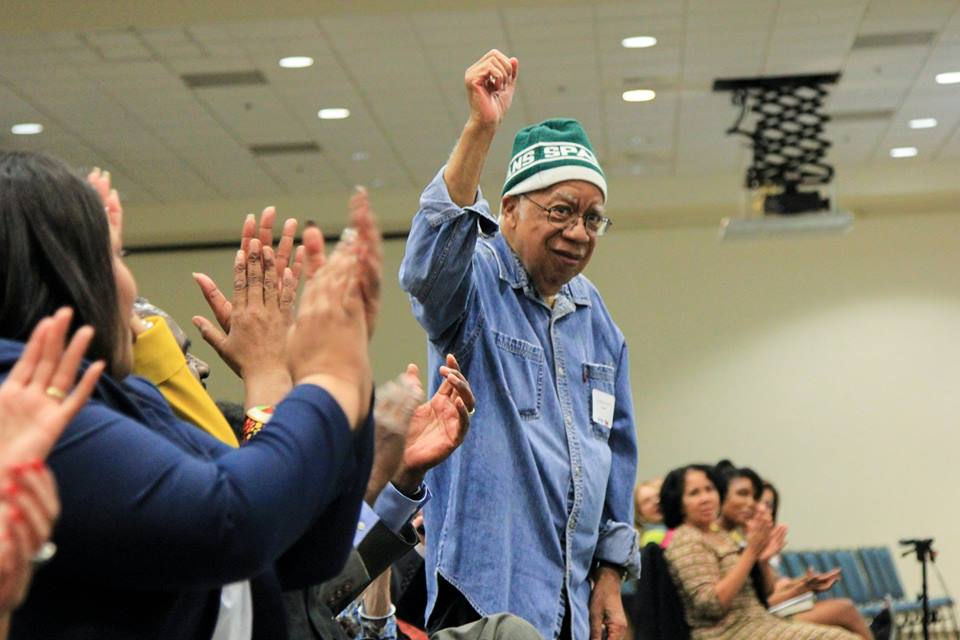Redefining Race: A Night with Melissa Harris-Perry
- Evan Siegel
- Dec 3, 2015
- 4 min read

The UC Irvine New Narratives program drew a capacity-reaching crowd to the Pacific Ballroom in the Student Center with its “How Black Lives Matter to American Politics” event, hosted by MSNBC show host and esteemed college professor Melissa Harris-Perry.
Harris-Perry’s eponymous program “Melissa Harris-Perry” is a general political talk show, but has a particular slant towards addressing the daily sociopolitical problems of black Americans. She is additionally the Presidential Chair Professor of Politics and International Affairs at Wake Forest University in North Carolina, making her doubly qualified to speak at the event, which was, as the title subtly suggests, about black Americans in American politics.
The presentation began with speeches from Fred Lipscomb, the New Narratives event organizer, and Dr. Thomas A. Parham, UC Irvine’s Vice Chancellor. Lipscomb cordially thanked everybody for attending and listed off the various metrics and goals of the New Narratives program.
Parham spoke very briefly about the New Narratives program and then segued things into a conversation about the black community in Irvine and its various trials and tribulations. He requested applause for black salon owners in the audience, explaining that there were absolutely no black-owned salons in Irvine until very recently, and was generally full of praise for both those present and for Harris-Perry herself, describing her as “buoyant and bubbly” while also praising her for her loquaciousness and dedication to the black community.
“We are never surprised by the amount of black excellence, even if the media is,” said Parham before finally inviting Harris-Perry up onto the stage.
“I have a 122-slide PowerPoint and 22 minutes, so here we go,” said Harris-Perry, who had to rush back to Los Angeles following the event to catch a flight.
Harris-Perry, thus, began her journey through her own presentation, taking the audience with her through a retelling of sordid events from America’s history. Her primary goals were twofold: she firstly wanted to define the nature of “blackness” and its functions in society and secondly wanted to illustrate how intangible perceptions of race divide American communities.
To accomplish this, she listed off a carefully-curated laundry list of points, beginning the ride with an examination of the treatment of the black victims of Hurricane Katrina and slowly sailing her way through other topics, like the public’s perception of President Obama’s race (“He was black in slavery, he was black in Jim Crow, he’s black now”) and the controversial, police-related killings of black Americans like Trayvon Martin, Michael Brown and Sandra Bland.
Of the killings, Harris-Perry was very specific with her words, essentially saying that the deaths were a joint, country-wide failure. “We walked around [Michael Brown’s] body,” said Harris-Perry. “We shot Trayvon Martin.” She also did not hesitate to bring up pictures of slaves’ disfigured bodies following beatings and other images of physical aggression against black Americans.
“[Racism] is acted out on black bodies,” said Harris-Perry.
The end goal of her slideshow was to show how blackness is less of a race-related concept and is more of a concept related to marginalized groups. Her most prominent example of intra-racial blackness was the example of Jesus, casually hanging out with the homeless and downtrodden; even though Jesus may not have been black, his experiences with the poor were those of blackness. This definition also aided her in making her second point, which was simply that race isn’t real and should not divide experiences between or complicate treatment of specific people based solely on the color of their skin.
Due to time constraints, she briskly ran through the final slides, then sat down with Parham and a student representative to answer questions. She was quite frank with her answers; one of the most notable was her saying that black students are not allowed to sit and be frustrated with their less privileged situations if they’re not doing anything to improve things for themselves.
“Nobody promised you that you’d be in the part of the movement that wins,” said Harris-Perry. “You are not allowed to abdicate your role.”

Throughout the event, the atmosphere in the room was unexpectedly charged. The stagnant formality of a typical political event was absent, instead replaced by fist pumps and cheers and Harris-Perry’s laughing and joking around during repartees with people in the audience. Even as Harris-Perry spoke of topics like the whipping and lynching of slaves, people responded with passionate “Yeahs” and “Mmhmms,” making things feel livelier — more like a rally than a stuffy, solemn political affair.
All of this was made possible through Harris-Perry’s impeccable conversational leadership skills. She gave her entire presentation without stuttering or stammering once, doing so without a script or teleprompter. Her tone changed as needed, switching from normal to mocking to indignant. She responded to unexpected audience responses with decisive answers, refusing to let her momentum be broken. Everything flowed very smoothly.
And it was, altogether, a very unifying experience. Despite the presentation being primarily about dichotomies and privilege-based differences, it was also about coming together to make changes and aid those who are in need of help. By the end, despite being in a room of formally-clothed attendees, you feel more together with them, having watched them hoot and holler about racial issues and laugh at the same jokes you laughed at within the past hour. Harris-Perry provided an experience that, despite the heavy content, was entertaining, informative, and humanizing.
Photos courtesy of UC Irvine Student Affairs.




Comments